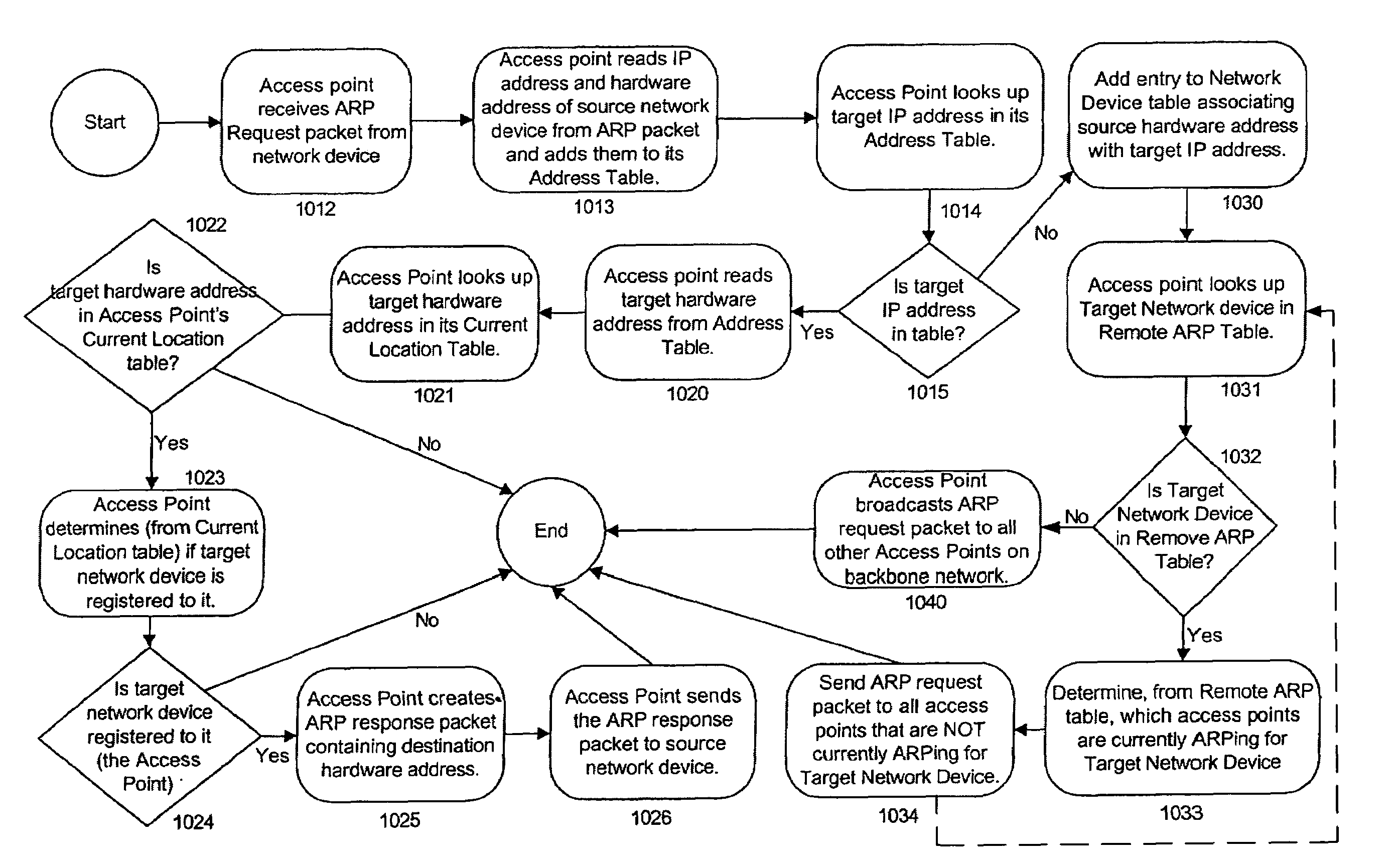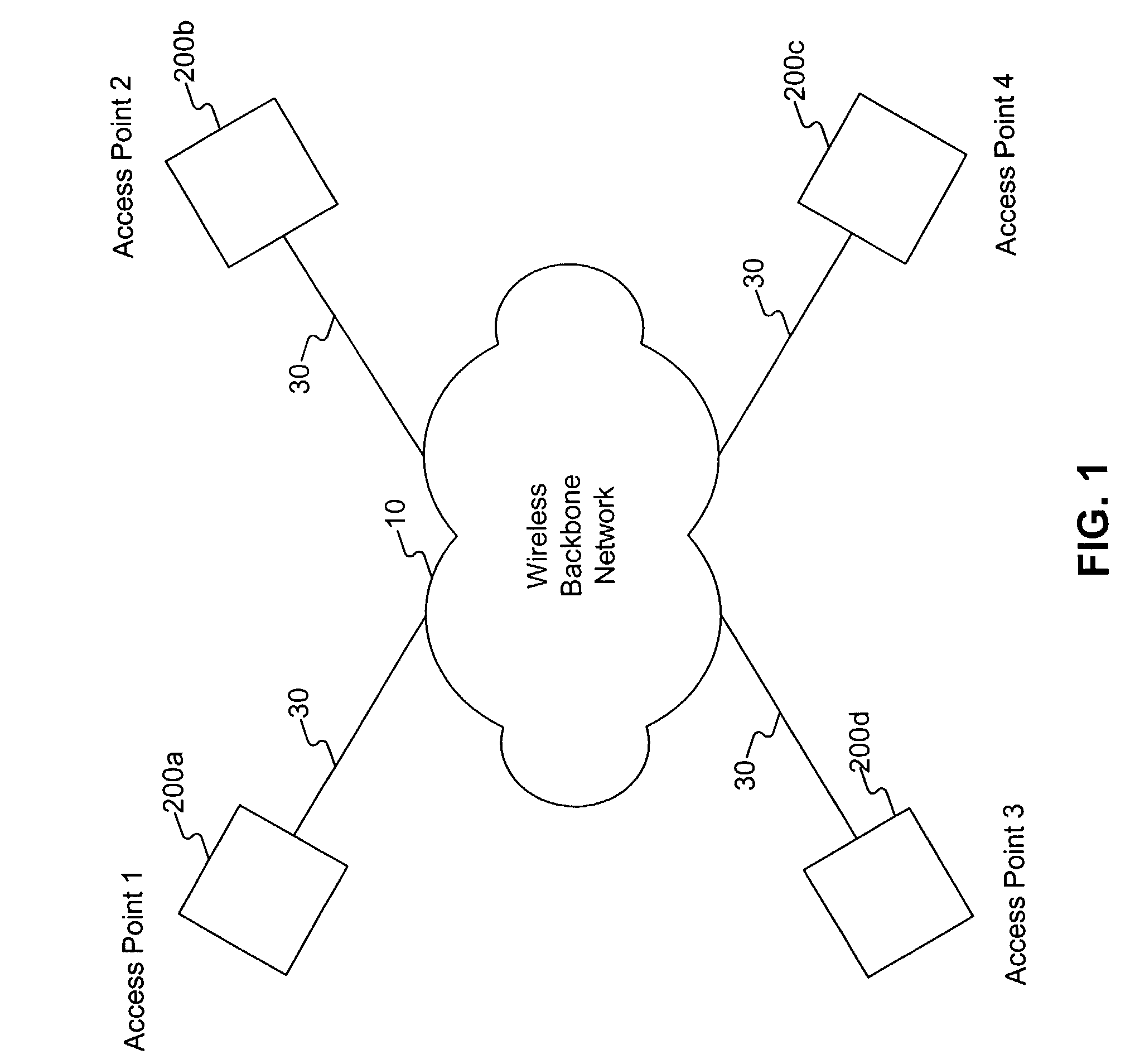System and method for reducing broadcast traffic wireless access-point networks
a wireless access-point network and broadcast traffic technology, applied in the field of network communication systems, can solve problems such as unnecessary network traffic, and achieve the effects of reducing broadcast traffic, and reducing arp broadcast traffi
- Summary
- Abstract
- Description
- Claims
- Application Information
AI Technical Summary
Benefits of technology
Problems solved by technology
Method used
Image
Examples
Embodiment Construction
[0025]In the following detailed description of an embodiment, reference is made to the accompanying drawings that form a part thereof, and in which is shown by way of illustration a specific embodiment in which the invention may be practiced. This embodiment is described in sufficient detail to enable those skilled in the art to practice the invention and it is to be understood that other embodiments may be utilized and that structural changes may be made without departing from the scope of the present invention. The following detailed description is, therefore, not to be taken in a limited sense.
[0026]A distributed network in accordance with the present invention, comprises a plurality of access points that communicate with a wireless backbone network via an optical or radio link. The distributed network may comprise any one of a number of types of networks over which client computers and server computers communicate, including local area networks (LANs), wide area networks (WANs),...
PUM
 Login to View More
Login to View More Abstract
Description
Claims
Application Information
 Login to View More
Login to View More - R&D
- Intellectual Property
- Life Sciences
- Materials
- Tech Scout
- Unparalleled Data Quality
- Higher Quality Content
- 60% Fewer Hallucinations
Browse by: Latest US Patents, China's latest patents, Technical Efficacy Thesaurus, Application Domain, Technology Topic, Popular Technical Reports.
© 2025 PatSnap. All rights reserved.Legal|Privacy policy|Modern Slavery Act Transparency Statement|Sitemap|About US| Contact US: help@patsnap.com



